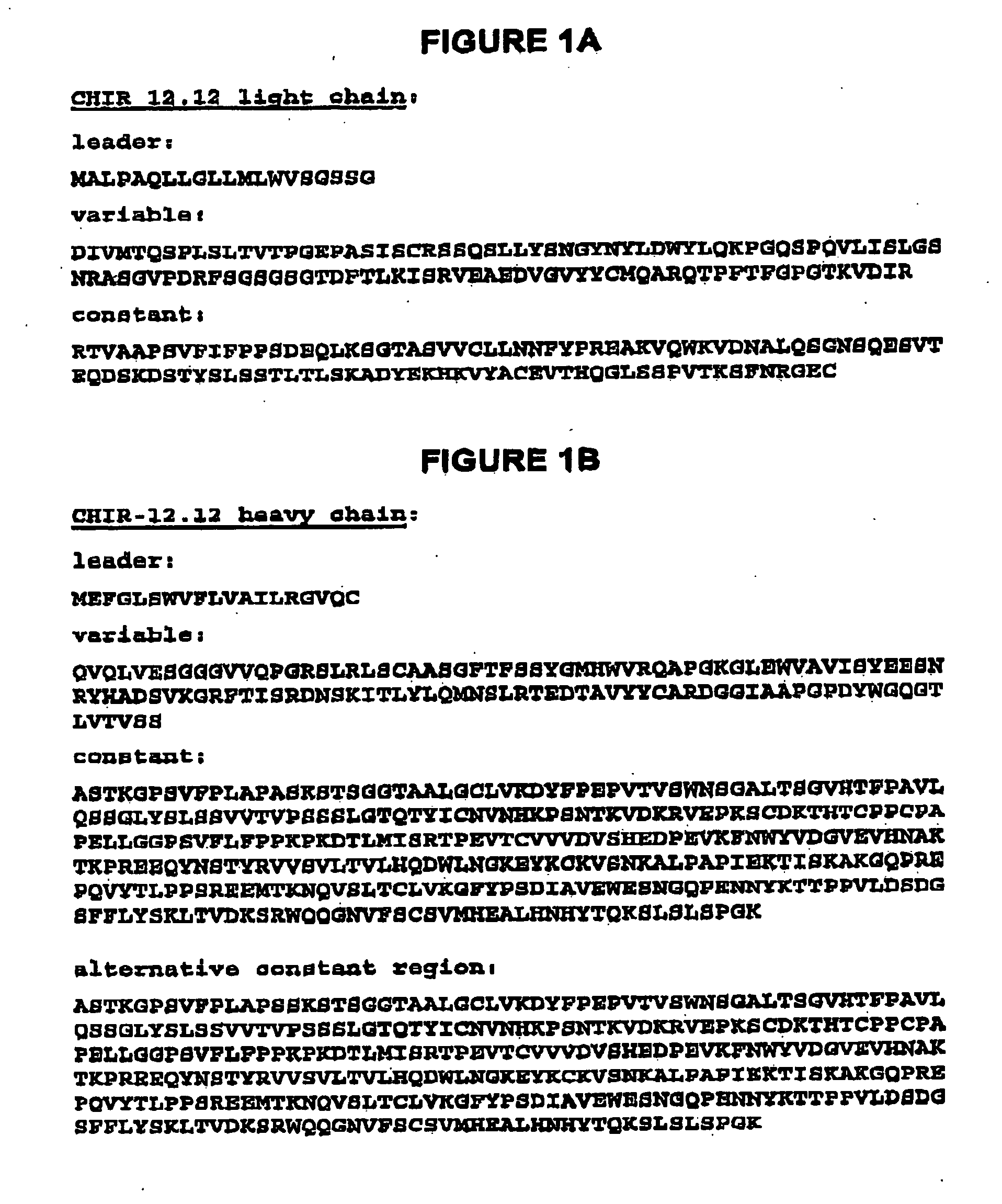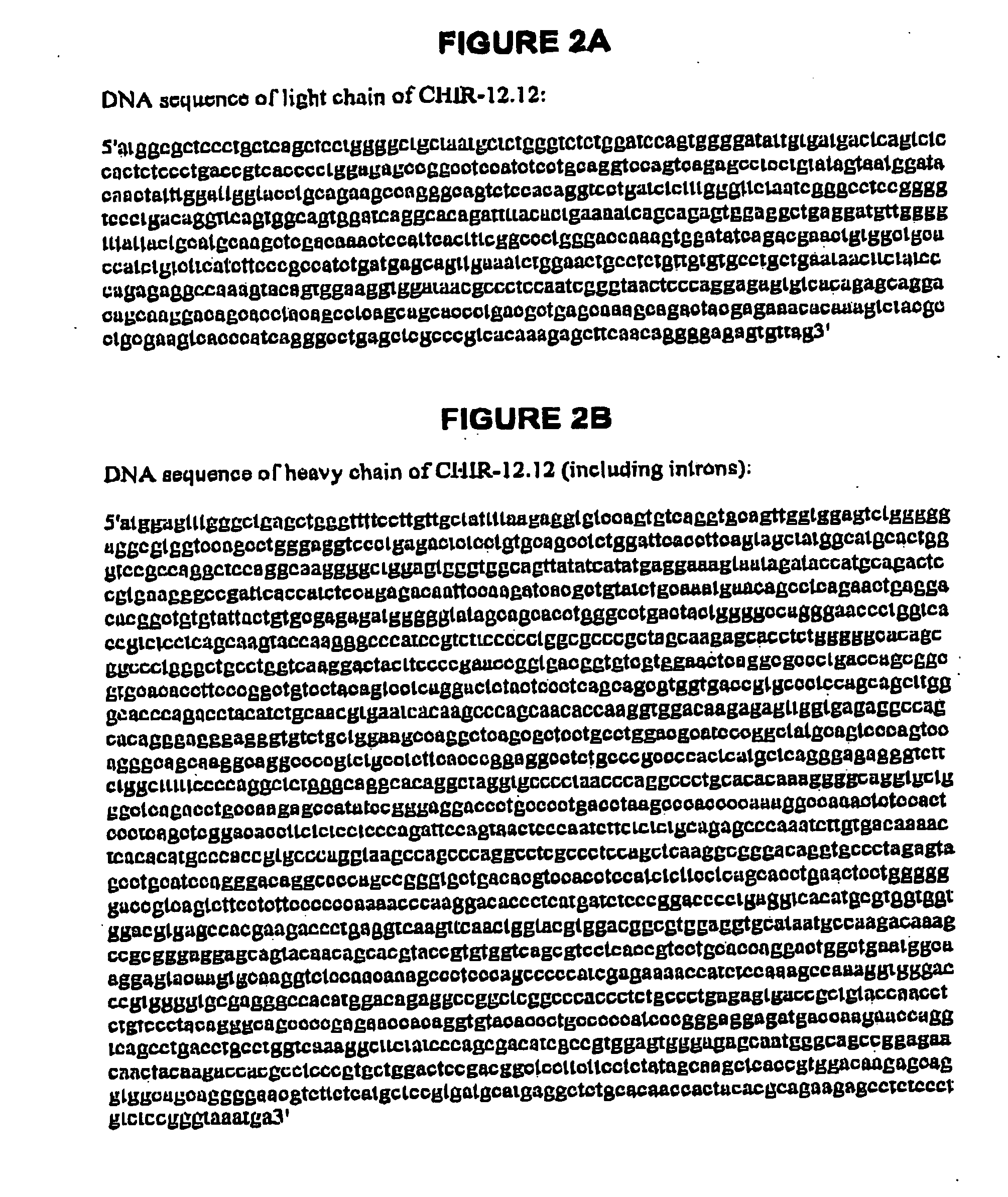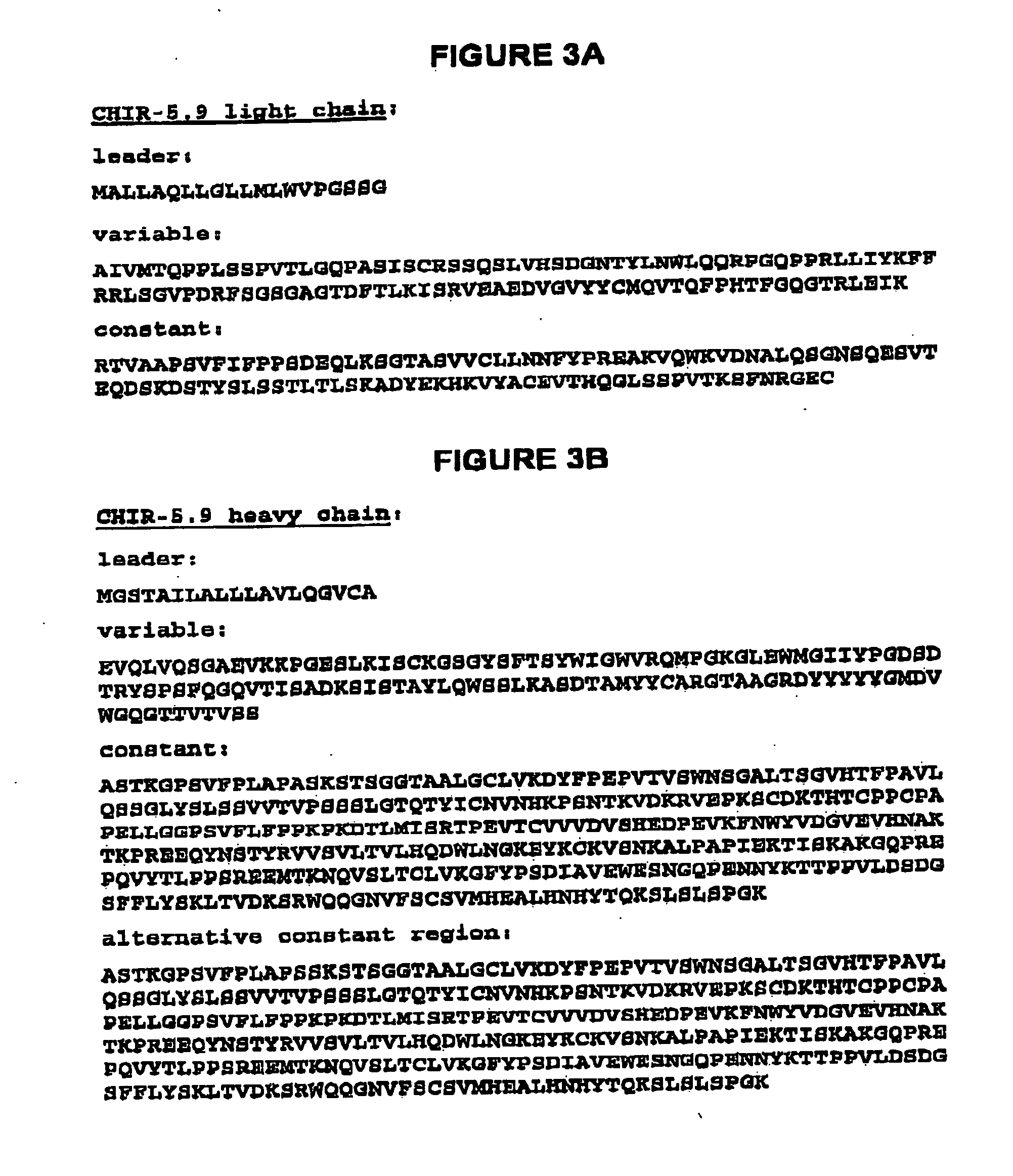Use of antagonist anti-cd40 antibodies for treatment of chronic lymphocytic leukemia
- Summary
- Abstract
- Description
- Claims
- Application Information
AI Technical Summary
Benefits of technology
Problems solved by technology
Method used
Image
Examples
example 1
CHIR-5.9 and CHIR-12.12 Can Block CD40-Mediated Survival and Proliferation of Cancer Cells from CLL Patients
[0165] The candidate antibodies can block CD40-mediated survival and proliferation of cancer cells from CLL patients. CLL cells from patients were cultured in suspension over CD40L-expressing formaldehyde-fixed CHO cells under two different conditions: addition of human isotype antibody IgG (control); and addition of either CHIR-5.9 or CHIR-12.12 monoclonal antibody. All antibodies were added at concentrations of 1, 10, and 100 μg / mL in the absence of IL-4. The cell counts were performed at 24 and 48 h by MTS assay. Reduced numbers of cells were recovered from CHIR-5.9-(n=6) and CHIR-12.12-(n=2) treated cultures compared to control group. The greater differences in cell numbers between anti-CD40 mAb-treated and control antibody-treated cultures were seen at the 48-h time point. These data are summarized in Table 2.
TABLE 2The effect of candidate antibodies on CD40-induced s...
example 2
Ability of Anti-CD40 mAb CHIR-12.12 to Lyse Chronic Lymphocvtic Leukemia (CLL) Cell Lines by Antibody-Dependent Cellular Cytotoxicity (ADCC)
[0168] The CLL cell line EHEB was cultured with antagonist anti-CD40 mAb CHIR-12.12 or the anti-CD20 antibody Rituxan® (IDEC Pharmaceuticals Corp., San Diego, Calif.) and freshly isolated human NK cells from normal volunteer blood donors as effector cells. The percent specific lysis was measured based on the release of marker from target cells.
[0169] The anti-CD40 mAb CHIR-12.12 showed lysis activity in a dose-dependent manner and reached maximum lysis levels at 0.1 μg / ml (FIG. 7). As shown in FIG. 7, mAb CHIR-12.12 induced greater ADCC-mediated cell lysis than Rituxano (maximum specific lysis with mAb CHIR-12.12=27.2% versus maximum specific lysis with Rituxan®=16.2%; p=0.007). Based on these results, approximately 10-fold more binding sites for anti-CD20 antibody than for anti-CD40 antibody were present on the target cells (see Table 3), in...
example 3
CHIR-5.9 and CHIR-12.12 Bind to a Different Epitope on CD40 than 15B8
[0170] The candidate monoclonal antibodies CHIR-5.9 and CHIR-12.12 compete with each other for binding to CD40 but not with 15B8, an IgG2 anti-CD40 mAb (see International Publication No. WO 02 / 28904). Antibody competition binding studies using Biacore were designed using CM5 biosensor chips with protein A immobilized via amine coupling, which was used to capture either anti-CD40, CHIR-12.12, or 15B8. Normal association / dissociation binding curves are observed with varying concentrations of CD40-his (data not shown). For competition studies, either CHIR-12.12 or 15B8 were captured onto the protein A surface. Subsequently a CD40-his / CHIR-5.9 Fab complex (100 nM CD40:1 μM CHIR-5.9 Fab), at varying concentrations, was flowed across the modified surface. In the case of CHIR-12.12, there was no association of the complex observed, indicating CHIR-5.9 blocks binding of CHIR-12.12 to CD40-his. For 15B8, association of th...
PUM
| Property | Measurement | Unit |
|---|---|---|
| Molar density | aaaaa | aaaaa |
| Molar density | aaaaa | aaaaa |
Abstract
Description
Claims
Application Information
 Login to View More
Login to View More - Generate Ideas
- Intellectual Property
- Life Sciences
- Materials
- Tech Scout
- Unparalleled Data Quality
- Higher Quality Content
- 60% Fewer Hallucinations
Browse by: Latest US Patents, China's latest patents, Technical Efficacy Thesaurus, Application Domain, Technology Topic, Popular Technical Reports.
© 2025 PatSnap. All rights reserved.Legal|Privacy policy|Modern Slavery Act Transparency Statement|Sitemap|About US| Contact US: help@patsnap.com



